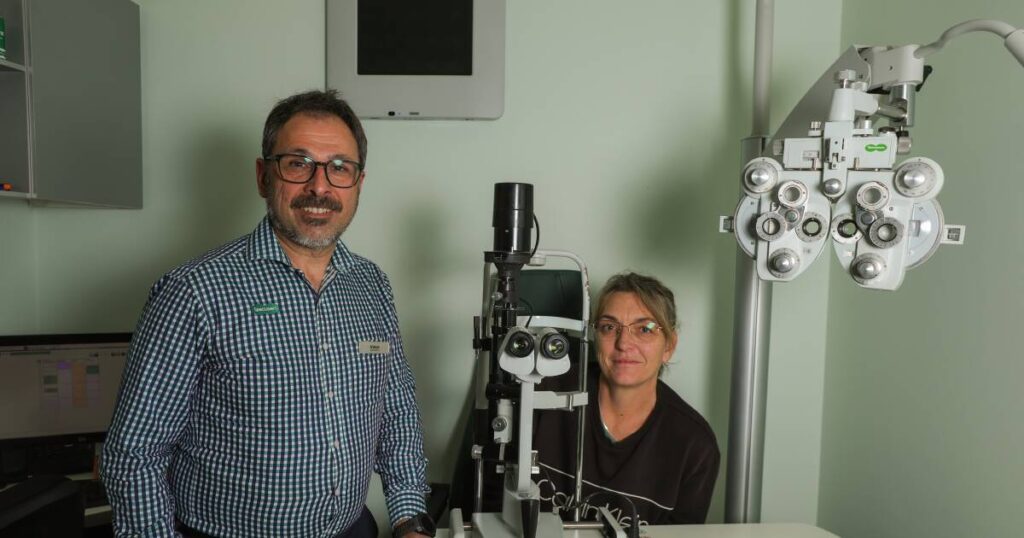
Optometrists in Australia are urging the public to prioritize eye health as a significant number remain unaware of a common condition known as presbyopia. According to national research conducted by Specsavers, approximately 72% of Australians aged between 35 and 50 have little knowledge of this condition, which impairs the ability to focus on nearby objects.
Kirsty Burt, who has been living with presbyopia for the past 15 years, emphasizes the importance of regular eye tests. Despite her family having no history of vision problems, Burt’s own experience began only after she faced other medical issues that prompted her to seek an eye examination. “I felt like a different person the night I got them,” she shared, recalling the moment she first wore glasses. “I live in the country and I drove home at night and I didn’t have to slow down around the bends if I had cars coming around the other way because I could see.”
While presbyopia is not classified as an eye disease, Burt stresses that neglecting eye health can have serious consequences. “It’s most definitely a safety thing too,” she remarked. “Some people don’t realize that they can’t even see until they come and get tested, and it’s like, ‘wow, how long have you been driving around like that?'”
Symptoms of presbyopia include blurry vision when looking at close objects, the need for brighter light to see clearly, headaches while reading, difficulty switching focus between distances, and quicker eye fatigue. Burt, who uses multifocal glasses to manage her vision, noted that the condition tends to worsen with age.
Understanding the Impact of Presbyopia on Daily Life
The Specsavers study highlighted that many drivers unconsciously adapt to their diminishing vision by leaning forward in their seats, squinting at street signs, and gripping the steering wheel tightly. Vince Marzano, the optometry director at Specsavers in Albury, indicated that presbyopia typically begins to affect individuals in their early forties. “The lens and the eyes stop changing shape and things start to get blurry up close,” he explained. “As we get older, it just gets worse and worse.”
The research also revealed common coping strategies among participants, such as resizing screen text, using a phone torch for better visibility, holding reading material at arm’s length, and even borrowing reading glasses from others. Marzano recommends taking regular breaks from screens every 20 minutes to rest the eyes and spending more time outdoors.
“Coming in for an eye test is crucial,” he advised. “It’s important to ensure that there isn’t something more serious happening with the eyes that’s masking the problem.” Marzano also emphasized that difficulties with nighttime driving are not solely attributable to presbyopia, underscoring the necessity of comprehensive eye exams every two years to detect potential underlying issues.
As awareness of presbyopia remains low, optometrists are committed to educating the public about the necessity of eye tests. By prioritizing eye health, individuals can enhance their quality of life, maintain safety on the roads, and avoid the risks associated with unaddressed visual impairments.





